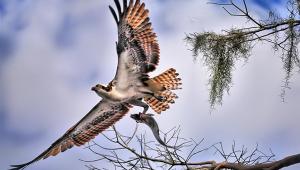Astronaut Captures Unbelievable Night Shot of an Ancient Crater on Earth Lit by the Aurora Borealis

Astronauts aboard the International Space Station have been sending back some incredible images—many of which can be viewed at NASA’s online image gallery. The incredible photograph you see here is one of our all-time favorites.
The faint circle in the lower right corner is the rim of the frozen Manicouaga impact crater, caused when a meteor collided with Earth millions of years ago near what is now Quebec, Canada. Roughly 215 million years old, the crater is the largest ‘visible” impact crater on Earth.

What makes the shot special, of course, is that the scene is illuminated by the green veils of the aurora borealis spanning thousands of miles over Canada. The phenomenon, also referred to as the "northern lights," occurs when charged light particles in the magnetic space around Earth are accelerated by storms around the Sun. The fainter band of light near the horizon is what astronomers call an “airglow,” and is also caused by an interaction between radiation from the Sun and Earth’s atmosphere.
If you’re as enthralled by this image as we are, take a look at the story we posted last week with some amazing close-up images of the surface of Mars.

















































